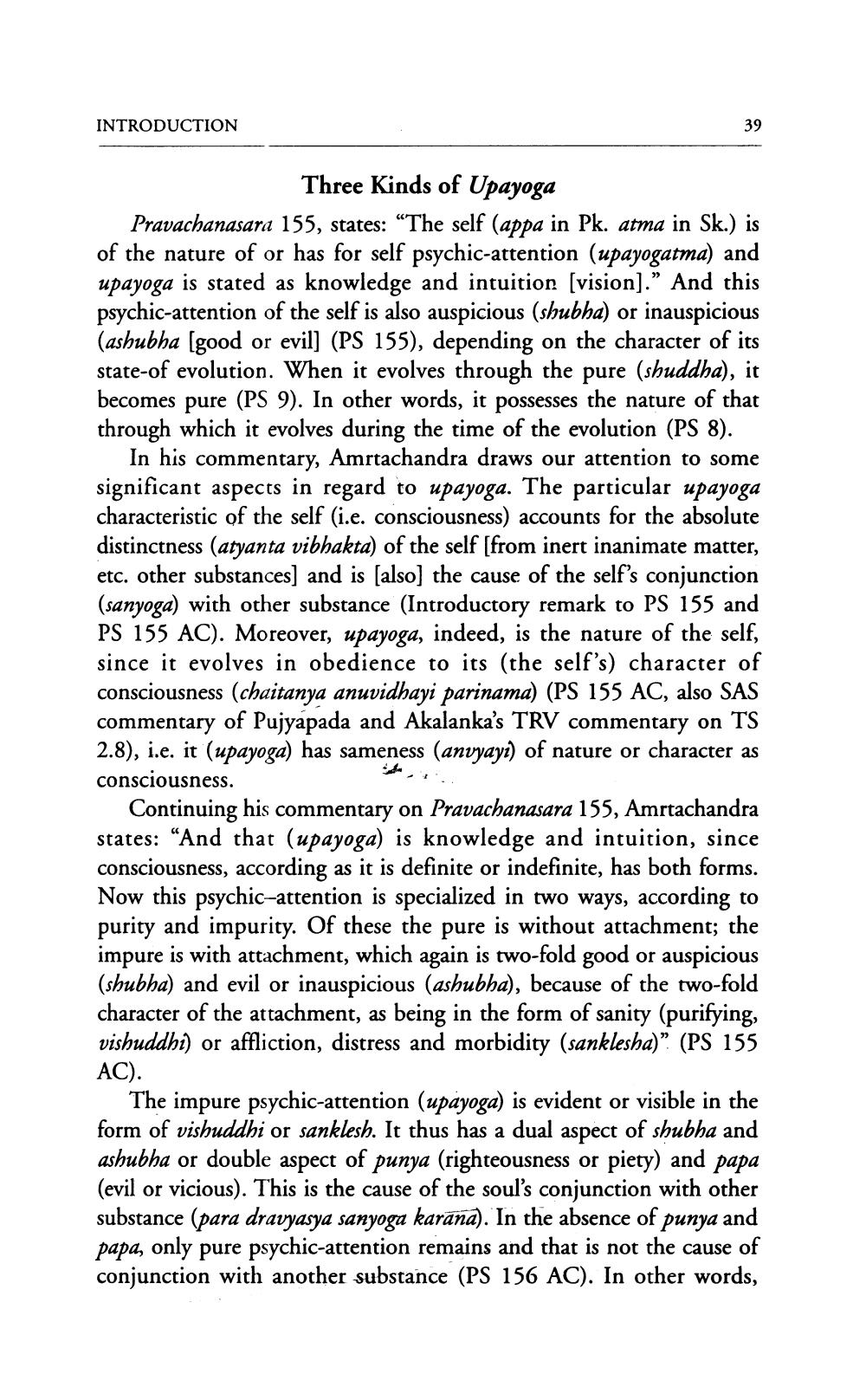________________
INTRODUCTION
39
Three Kinds of Upayoga Pravachanasara 155, states: “The self (appa in Pk. atma in Sk.) is of the nature of or has for self psychic-attention (upayogatma) and upayoga is stated as knowledge and intuition [vision).” And this psychic-attention of the self is also auspicious (shubha) or inauspicious (ashubha [good or evil] (PS 155), depending on the character of its state-of evolution. When it evolves through the pure (shuddha), it becomes pure (PS 9). In other words, it possesses the nature of that through which it evolves during the time of the evolution (PS 8).
In his commentary, Amrtachandra draws our attention to some significant aspects in regard to upayoga. The particular upayoga characteristic of the self (i.e. consciousness) accounts for the absolute distinctness (atyanta vibhakta) of the self (from inert inanimate matter, etc. other substances) and is (also) the cause of the self's conjunction (sanyoga) with other substance (Introductory remark to PS 155 and PS 155 AC). Moreover, upayoga, indeed, is the nature of the self, since it evolves in obedience to its (the self's) character of consciousness (chaitanya anuvidhayi parinama) (PS 155 AC, also SAS commentary of Pujyapada and Akalanka's TRV commentary on TS 2.8), i.e. it (upayoga) has sameness (anvyayı) of nature or character as consciousness.
Continuing his commentary on Pravachanasara 155, Amrtachandra states: “And that (upayoga) is knowledge and intuition, since consciousness, according as it is definite or indefinite, has both forms. Now this psychic-attention is specialized in two ways, according to purity and impurity. Of these the pure is without attachment; the impure is with attachment, which again is two-fold good or auspicious (shubha) and evil or inauspicious (ashubha), because of the two-fold character of the attachment, as being in the form of sanity (purifying, vishuddhi) or affliction, distress and morbidity (sanklesha)” (PS 155 AC).
The impure psychic-attention (upayoga) is evident or visible in the form of vishuddhi or sanklesh. It thus has a dual aspect of shubha and ashubha or double aspect of punya (righteousness or piety) and papa (evil or vicious). This is the cause of the soul's conjunction with other substance (para dravyasya sanyoga karana). In the absence of punya and papa, only pure psychic-attention remains and that is not the cause of conjunction with another substance (PS 156 AC). In other words,
.




